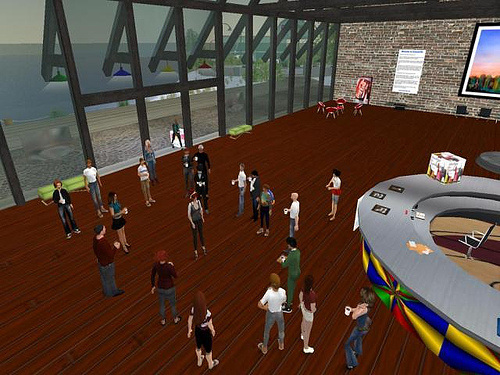Via: The Wall Street Journal Online
Increasingly, businesses, particularly in the advertising and media industries, are opening virtual offices in Second Life as an internal communications device, a way to keep their fingers on the pulse of the fast-changing digital landscape -- and as a tool to recruit tech-savvy employees.
"To explore the new world, you have to live in it," says Mark Tutssel, chief creative officer of Leo Burnett Worldwide, a unit of Publicis Groupe
New-media marketing firm Crayon has its primary office on a Second Life island called Crayonville.
Any avatar that visits crayonville island in Second Life is free to visit crayon's meeting room, but the meetings are closed if employees are discussing private client matters.
Scenes from the virtual world of Second Life: a meeting for the company Crayon
A growing number of companies, especially those in media-related areas, find it makes sense to work on Second Life. Ad agencies and other media companies have come under pressure in the past few years to show they can keep pace with developments in the digital world.
- Accessibility to a wide range of individuals who are geographically dispersed, and the ability to bring these persons together on common ground.
- The creation of virtual worlds that go beyond just simple cause-and-effect interactions (i.e., shoot a gun, kill a monster).
- The use of avatars that represent individuals and can manifest one’s own unique personalities and tastes.
- An increased ability for intercultural interaction and the ability to gain experience interacting with those different from oneself.
- The ability to facilitate growth within the avatar such that their experiences accrue and can be measured.
- The ability to share information with other members of the virtual world.
- The ability to evaluate interactions and collect meaningful data from them.
- The ability to create a virtual economy that is driven by many of the same laws and rules that our real economies are bound by.
- The power of branding, using the virtual world to promote real-world experiences and products.




